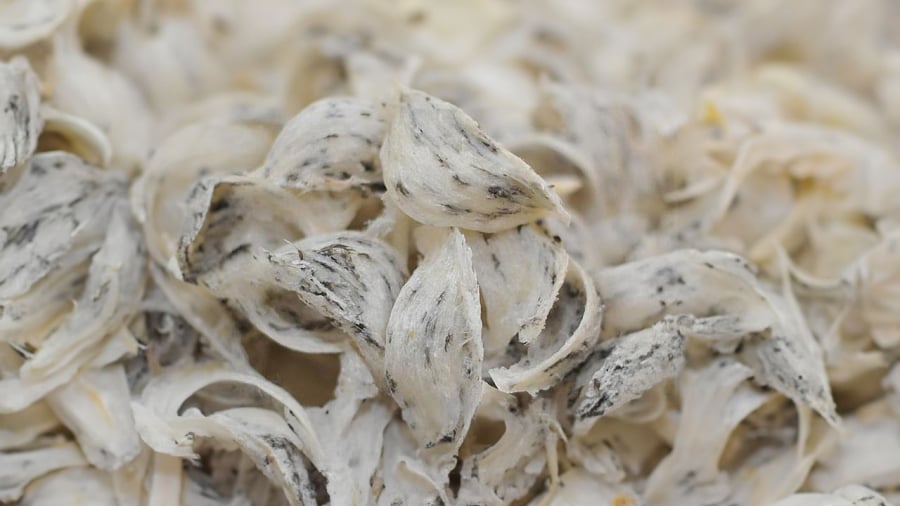Swallow’s nest is a nutritious food on the market. But because it is expensive, counterfeit, fake and low-quality nest are increasingly rampant in the market. Swallow’s nest is considered a very nutritious dish, belonging to the bird’s nest group, with many uses. Swallow’s nest is also a valuable gift for the end of the year.
To avoid buying fake and low-quality swallow’s nest, you should pay attention to the following ways to distinguish between real and fake swallow’s nest in order to avoid being deceived and prevent dishonest business activities.

Observe the external shape of the nest
If you look closely, you will see that the real nest has a tangled, overlapping shape like tangled fibers, a curved wing shape that looks dry and fibrous. Real nests feel firm when held, with thin edges but thick bodies to cling tightly to the rock wall. Their sizes are not uniform, and their thickness varies. If you hold them up to the light, you can see the light passing through and a milky white color. On the other hand, fake nests are solid in shape, uniform in appearance, soft, and neatly distributed fibers. When held in the hand, fake nests are very light and look much rougher than real nests. The fibers of the fake nest look softer, and when viewed under sunlight, they appear translucent due to being made from starch or egg white…
Taste
You can take a strand and taste it immediately. When tasting the real nest, it has a mild sweetness, resembling egg white. But if it has a strong sweet taste, then it is completely fake because sugars are used to create good adhesion and prevent mold…
Color of the nest
If it is a real nest, it has a milky white color, sometimes yellowish. When you smell it, you will notice a slightly fishy, bird saliva aroma. On the other hand, the color of the white fake nest is extremely bright, the smell is pungent due to the use of bleach…

Remember to smell the nest
While the real nest has a fishy, musty smell, which remains unchanged even if kept for a long time, the mixed fake nest has a smell of fish or ink. The musty smell of the real nest is natural due to the formation of the nest in nature. Especially after being brewed, the distinctive fishy smell of swiftlet is still preserved, while the fake nest loses this smell and only reveals the smell of bleach…
Check the elasticity of the nest
Use your hand to gently squeeze and check the elasticity. Real nests are brittle, easy to break into pieces; while fake nests have a certain elasticity and will break into blocks…
The expansion of the nest
If you press on the real nest, it will have a distinctive fishy smell, and the nest fibers will expand intact. Even when used to cook soup and boiled for a long time, the nest still remains intact, not dissolved or softened. But fake nests, when boiled, emit a strange smell, the nest fibers expand less, and even shrivel due to being made from starch. No matter how well crafted the fake nest is, when boiled for about five minutes, it will all dissolve…
Soak the nest in water
A real nest will expand twice as much when soaked in water. If you stir it with your hand, you will see foam on the surface of the water. On the contrary, the fake nest will expand less, and when stirred, the water will become cloudy due to the starch and additives dissolving…






























